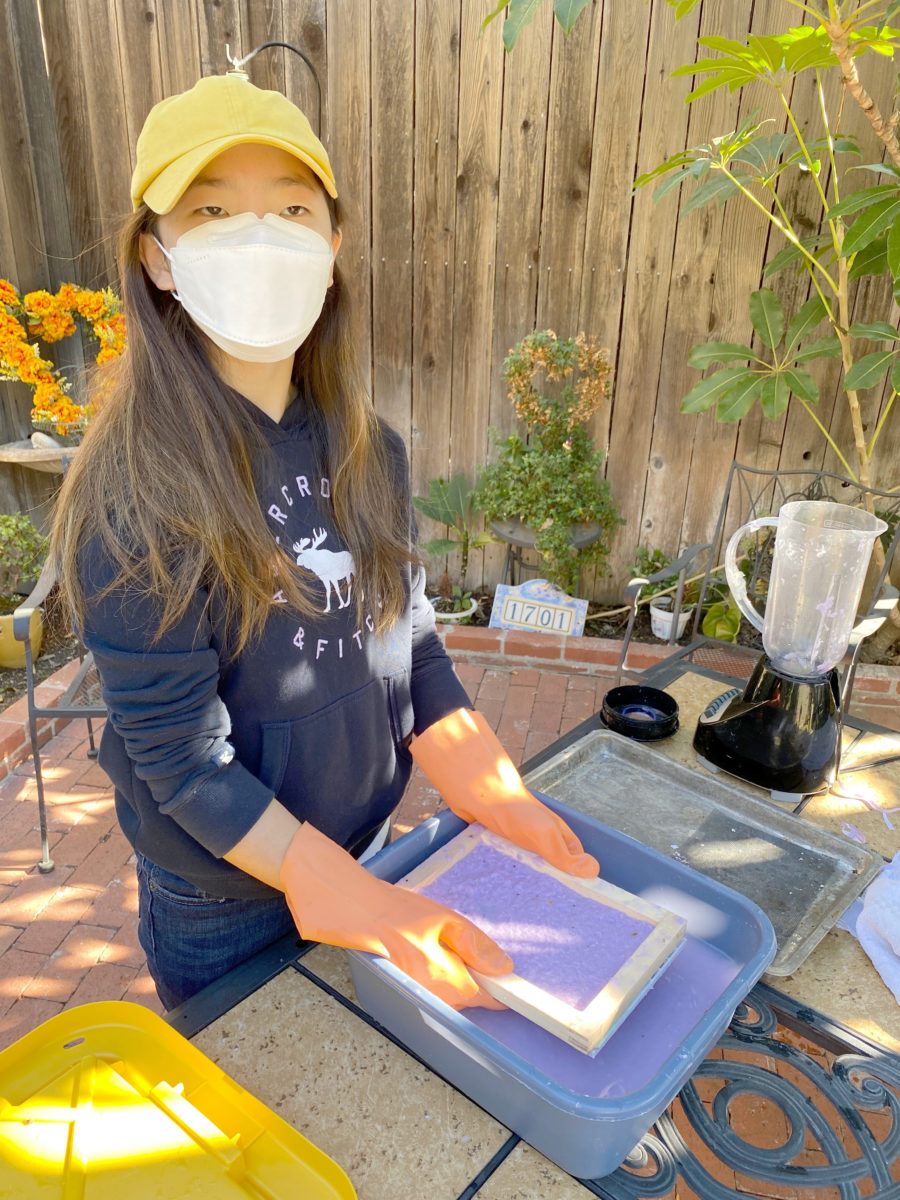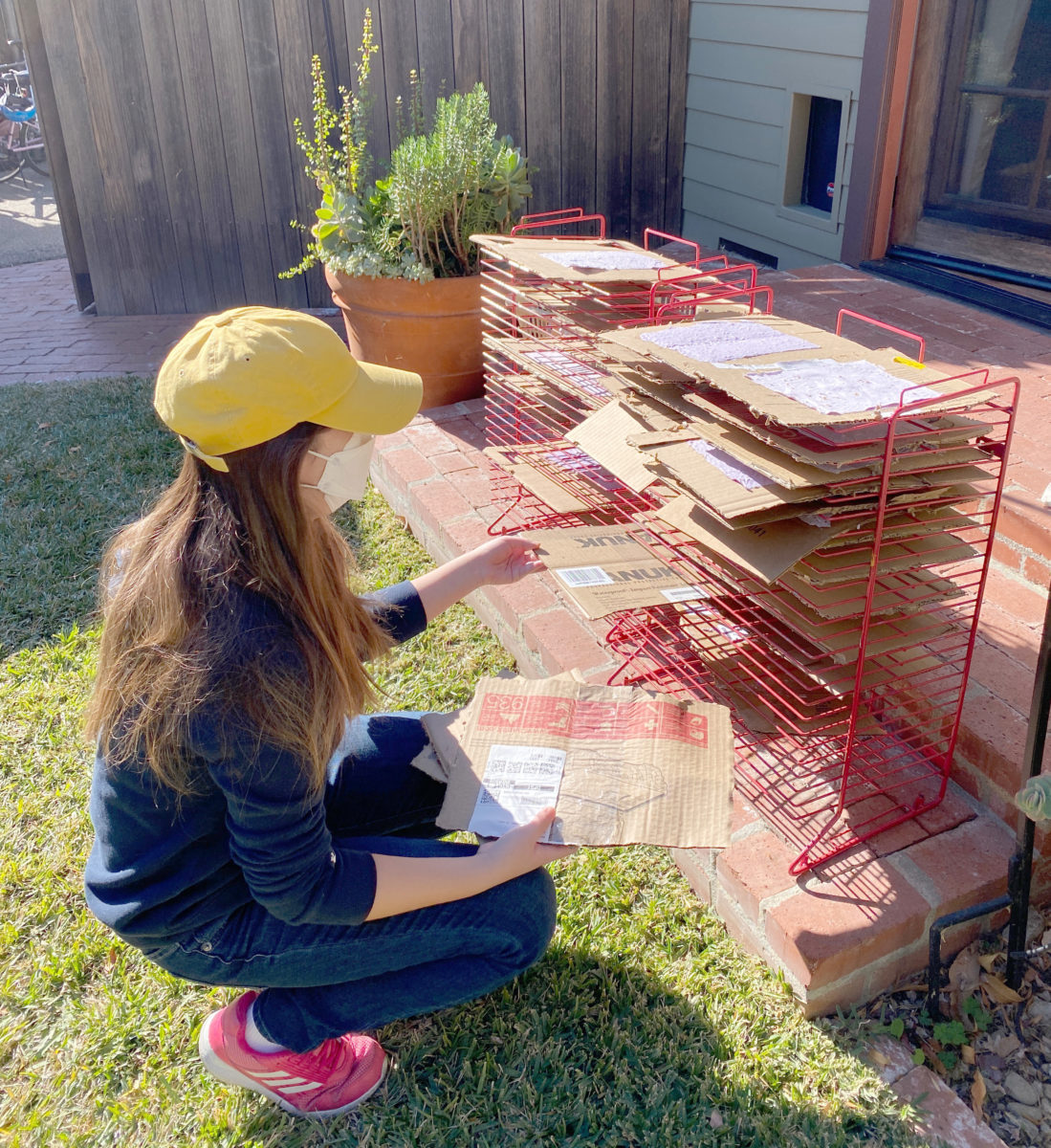
Two young Girl Scouts are making an impact in a big way for some tiny cohabitants. Elise Kim and Michelle Maling of Troop 8931 at Holy Family School have successfully launched a campaign to ‘Save the Bees’ by collectively converting our backyards (or front yards) into bee gardens for our yellow-and-black, pollinating partners.
Hoping to shed a more positive light on the stigmatized, thumbnail-sized creatures, the team “chose to save the honey bees because we thought: many other Girl Scouts are helping shelters, and bigger animals,” Kim and Maling told the South Pasadenan News, but “not everyone thinks about saving the insects that a lot of people are scared of or are allergic to.”

Recipients of the prestigious Silver Award Project — which funds endeavors that focus on issues that people can make sustainable impacts on — the two call it “the highest honor that a Girl Scout Cadette can achieve.”
Through their research, the pair found that the declining bee population on both a macro and micro scale was leaving major — and possibly irreversible — scars on our environment. According to a study published by Environment California — a conservation group dedicated to cleaning up the environment — beekeepers are losing, on average “30 percent of all honeybee colonies each winter — twice the loss considered economically tolerable”, which is only exacerbated by the diminishing global presence of bees.
“Honey bees are the ones that make it possible to enjoy most of the tasty and healthy food we eat,” says the two scouts, “They also make it possible for people to enjoy pretty flowers, plants, and trees.” Putting their heads together, they sought a simple-yet-effective (and, of course environmentally-friendly) solution that they could easily circulate within the community.

The consensus? “We decided to make flower seed paper so that people could plant them in their gardens,” says Maling. All they needed to get started were two basic components: shredded paper and flower seeds (ideally of the more vividly colored variety, which they say better attracts honeybees). Reaching out to the people of South Pasadena, they printed flyers and posted requests for donations online, to which they received a response that “exceeded their expectations.”
The next thing to do was make and assemble the packets, a four-part process Kim and Maling studied and practiced thoroughly back in November, aiming to rollout the finished product for the upcoming Spring the following year.
So what does it take? Step one starts with making a pulp by blending the shredded paper with water. Step two is pouring that pulp into a bin and then adding the flower seeds into the mixture. On to step three, using molds and deckles to make the processed pulp into paper. Finally, once the solution dries into paper it is cut into postcard sized pieces, with instructional tags attached.

Now that they had their product in place, they needed to find viable distribution centers while staying COVID-safe. “Due to the pandemic, we decided not to do any in-person distribution,” said Maling, who along with Kim contacted the Holy Family Church Environmental Ministry, and got the suggestion to put the flower seed paper in the Holy Family Church Bookstore. Additionally, they contacted Mr. Chuck Jones and asked if they could leave a flower seed paper pick-up station at Jones Coffee Roasters. Both places were more than happy to oblige.

Anyone can pick up the packets at either location as they are complimentary — that’s right free-of-charge — for the sake of goodwill and a good cause. Once you have one in hand it’s as simple as “placing them under ⅛ inch of soil in a sunny location, watering them, and then a beautiful bee garden will grow!”
We rely on bees to pollinate 71 of the 100 crops that provide 90 percent of most of the world’s food. That’s a staggering statistic when you take a second to reflect, but one that the proactive girls feel can still be maintained. “After people’s flower gardens bloom, we hope that they can keep tending to their garden” and ultimately “spread awareness about the endangered honey bees,” they exclaimed. “It was all a fun and new experience for both of us. We think it would be amazing if we could plant more flower gardens around the city to brighten up places and make people smile.”

Flower seed packets can be picked up at either of these two locations:
- Jones Coffee Roasters, located on 1006 Mission St, South Pasadena, CA
- Holy Family Church Bookstore, located on 1519 Fremont Ave, South Pasadena, CA















.png)






